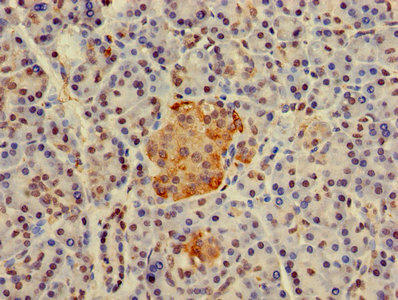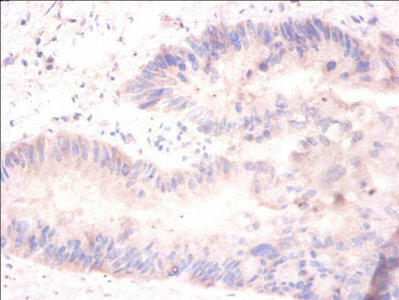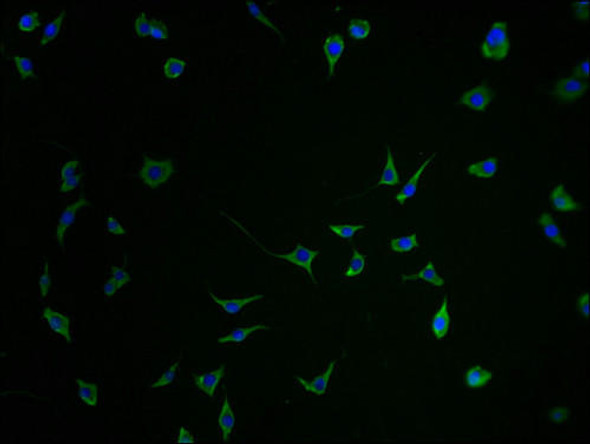Description
H2AFJ Antibody (PACO27293)
The H2AFJ Polyclonal Antibody (PAC027293) is a crucial tool for researchers studying the H2AFJ protein, a key histone variant involved in chromatin remodeling and gene expression regulation. This antibody, produced in rabbits, exhibits high specificity and sensitivity in detecting H2AFJ in human samples, making it an essential tool for Western blot assays. By specifically targeting the H2AFJ protein, researchers can investigate its functions and interactions in various cellular processes, paving the way for advancements in epigenetics and gene regulation studies.
H2AFJ, a member of the histone H2A family, is known for its unique role in modulating chromatin structure and gene transcription. Its involvement in regulating gene expression makes it a promising target for research in oncology, developmental biology, and epigenetics. By using the H2AFJ Polyclonal Antibody, researchers can gain valuable insights into the mechanisms underlying H2AFJ function, potentially leading to the development of novel therapeutic strategies targeting this histone variant.
| Antibody Name: | H2AFJ Antibody (PACO27293) |
| Antibody SKU: | PACO27293 |
| Size: | 50ug |
| Host Species: | Rabbit |
| Tested Applications: | ELISA, WB, IHC |
| Recommended Dilutions: | ELISA:1:2000-1:10000, WB:1:1000-1:5000, IHC:1:20-1:200 |
| Species Reactivity: | Human, Mouse |
| Immunogen: | Recombinant Human Histone H2A.J protein (2-129AA) |
| Form: | Liquid |
| Storage Buffer: | Preservative: 0.03% Proclin 300 Constituents: 50% Glycerol, 0.01M PBS, PH 7.4 |
| Purification Method: | >95%, Protein G purified |
| Clonality: | Polyclonal |
| Isotype: | IgG |
| Conjugate: | Non-conjugated |
 | Western blot All lanes: H2AFJ antibody at 2µg/ml Lane 1: Mouse brain tissue Lane 2: MCF-7 whole cell lysate Secondary Goat polyclonal to rabbit IgG at 1/10000 dilution Predicted band size: 15, 17 kDa Observed band size: 15 kDa . |
 | Immunohistochemistry of paraffin-embedded human pancreatic tissue using PACO27293 at dilution of 1:100. |
 | Immunohistochemistry of paraffin-embedded human colon cancer using PACO27293 at dilution of 1:100. |
| Background: | Core component of nucleosome. Nucleosomes wrap and compact DNA into chromatin, limiting DNA accessibility to the cellular machineries which require DNA as a template. Histones thereby play a central role in transcription regulation, DNA repair, DNA replication and chromosomal stability. DNA accessibility is regulated via a complex set of post-translational modifications of histones, also called histone code, and nucleosome remodeling. |
| Synonyms: | Histone H2A.J (H2a/j), H2AFJ |
| UniProt Protein Function: | H2AFJ: Core component of nucleosome. Nucleosomes wrap and compact DNA into chromatin, limiting DNA accessibility to the cellular machineries which require DNA as a template. Histones thereby play a central role in transcription regulation, DNA repair, DNA replication and chromosomal stability. DNA accessibility is regulated via a complex set of post-translational modifications of histones, also called histone code, and nucleosome remodeling. The nucleosome is a histone octamer containing two molecules each of H2A, H2B, H3 and H4 assembled in one H3-H4 heterotetramer and two H2A-H2B heterodimers. The octamer wraps approximately 147 bp of DNA. Belongs to the histone H2A family. 2 isoforms of the human protein are produced by alternative splicing.Protein type: DNA-bindingChromosomal Location of Human Ortholog: 12p12.3Cellular Component: nuclear chromatinMolecular Function: DNA bindingBiological Process: chromatin silencing |
| UniProt Protein Details: | |
| NCBI Summary: | Histones are basic nuclear proteins that are responsible for the nucleosome structure of the chromosomal fiber in eukaryotes. Nucleosomes consist of approximately 146 bp of DNA wrapped around a histone octamer composed of pairs of each of the four core histones (H2A, H2B, H3, and H4). The chromatin fiber is further compacted through the interaction of a linker histone, H1, with the DNA between the nucleosomes to form higher order chromatin structures. This gene is located on chromosome 12 and encodes a replication-independent histone that is a variant H2A histone. The protein is divergent at the C-terminus compared to the consensus H2A histone family member. This gene also encodes an antimicrobial peptide with antibacterial and antifungal activity.[provided by RefSeq, Oct 2015] |
| UniProt Code: | Q9BTM1 |
| NCBI GenInfo Identifier: | 29553970 |
| NCBI Gene ID: | 55766 |
| NCBI Accession: | NP_808760.1 |
| UniProt Secondary Accession: | Q9BTM1,Q9NV63 |
| UniProt Related Accession: | Q9BTM1 |
| Molecular Weight: | 41.3kD |
| NCBI Full Name: | histone H2A.J |
| NCBI Synonym Full Names: | H2A histone family member J |
| NCBI Official Symbol: | H2AFJ |
| NCBI Official Synonym Symbols: | H2AJ |
| NCBI Protein Information: | histone H2A.J |
| UniProt Protein Name: | Histone H2A.J |
| UniProt Synonym Protein Names: | |
| Protein Family: | Histone |
| UniProt Gene Name: | H2AFJ |
| UniProt Entry Name: |















